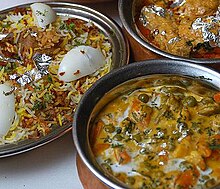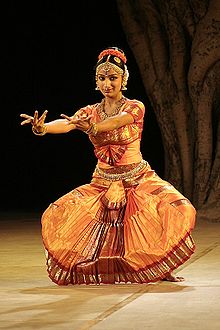An Andhra tribe was mentioned in the Sanskrit epics such as Aitareya Brahmana (800 BCE) and Mahabharata (400 BCE). The Natya Shastra written by Bharatha (1st century BCE) also mentions the Andhra people. The roots of the Telugu language have been seen on inscriptions found near the Guntur district and from others dating to the rule of Renati Cholas in the 5th century CE.
Megasthenes, a Greek traveller and geographer who visited the Court of Chandragupta Maurya (322–297 BCE), mentioned that the region had three fortified towns and an army of 100,000 infantry, 200 cavalry, and 1,000 elephants.Buddhist books reveal that Andhras established their huts or tents near the Godavari River at that time.
Inscriptional evidence shows that there was an early kingdom in coastal Andhra (Guntur District) ruled first by Kuberaka and then by his son Varun, with Pratipalapura (Bhattiprolu) as the capital. Around the same time, Dhanyakatakam/Dharanikota (present day Amaravati) appears to have been an important place, which was visited by Gautama Buddha. According to the ancient Tibetan scholar Taranatha: "On the full moon of the month Chaitra in the year following his enlightenment, at the great stupa of Dhanyakataka, the Buddha emanated the mandala of 'The Glorious Lunar Mansions' (Kalachakra)".

Kakatiya sculpture at Warangal
Literary evidence shows that long before Satavahanas, a legendary king named Āndhra Viṣhṇu ruled in and around the Diviseema region of Andhra Pradesh. After his reign, people came to believe that he had an amsa of the divine savior Lord Maha Vishnu himself. Perhaps in his honor, people dedicated a new temple now located at Srikākuḷam, Krishna District. The lord of the temple is known as Āndhra Viṣhṇu or Srikākuḷāndhra Viṣhṇu.
The Mauryans extended their rule over Andhra in the 4th century BC. With the fall of the Maurya Empire in the 3rd century BC, the Satavahanas became independent. After the decline of the Satavahanas in 220 CE, the Ikshvaku dynasty, Pallavas, Ananda Gotrikas, Rashtrakutas,Vishnukundinas, Eastern Chalukyas, and Cholas ruled the land. During this period, Telugu emerged as a popular language, supplanting Prakrit and Sanskrit. Telugu was made the official language by the Vishnukundina kings (5th and 6th centuries), who ruled from their capital city of Vengi. Eastern Chalukyas ruled for a long period after the decline of Vishnukundinas; their capital was also Vengi. As early as the 1st century CE, Chalukyas were mentioned as being vassals and chieftains under the Satavahanas and later under the Ikshvakus. The Chalukya ruler Rajaraja Narendra ruled Rajahmundry around 1022 CE.
The battle of Palnadu (1182) resulted in the weakening of the Eastern Chalukya dynasty and led to the emergence of the Kakatiya dynasty in the 12th and 13th centuries CE. The Kakatiyas were at first vassals of the Rashtrakutas, and ruled over a small territory near Warangal. Eventually all the Telugu lands were united by the Kakatiyas. In 1323 CE, Delhi Sultan Ghiyath al-Din Tughluq sent a large army under Ulugh Khan to conquer the Telugu country and captured Warangal. King Prataparudra was taken prisoner. Musunuri Nayaks recaptured Warangal from the Delhi Sultanate in 1326 CE and ruled for fifty years. Inspired by their success, the Vijayanagara Empire, one of the greatest empires in the history of Andhra Pradesh and India, was founded by Harihara and Bukka, who served as treasury officers of the Kakatiyas of Warangal. In 1347 CE, an independent Muslim state, the Bahmani Sultanate, was established in south India by Ala-ud-Din Bahman Shah in a revolt against the Delhi Sultanate. The Qutb Shahi dynasty held sway over the Andhra country for about two hundred years from the early part of the 16th century to the end of the 17th century. In Colonial India, Northern Circars became part of the British Madras Presidency. Eventually this region emerged as the Coastal Andhra region. Later the Nizam rulers of Hyderabad ceded five territories to the British which eventually emerged as Rayalaseema region. The Nizams retained control of the interior provinces as the Princely state of Hyderabad, acknowledging British rule in return for local autonomy. Meanwhile, the French occupied Yanam, in the Godavari delta, and (save for periods of British control) would hold it until 1954.
India became independent from the United Kingdom in 1947. The Nizam wanted to retain the independence of the Princely Hyderabad State from India, but the people of the region launched a movement to join the Indian Union. The state of Hyderabad was forcibly joined to the Republic of India with Operation Polo in 1948.
In an effort to gain an independent state based on the lingustic and protect the interests of the Andhra (telugu speaking) people of Madras State, Potti Sreeramulu fasted until death in 1952. After his death, Andhra attained statehood on 1 November 1953, with Kurnool as its capital.
On 1 November 1956, the States Reorganization Act merged the Telugu-speaking areas of the former Hyderabad state with the Telugu-speaking areas of the former Madras state to form the state of Vishalandhra, which is named as Andhra Pradesh. The city of Hyderabad, the former capital of the Hyderabad State, was made the capital of the new state. There were several movements to disintigrate Andhra Pradesh into two States viz. Andhra and Telengana in the late 1960 which are continuing till date.
On 9 December 2009, it was announced that a separation proposal for Telangana would be introduced to the state assembly. Controversy arose as to the future status of Hyderabad City, part of one of the ten districts of Telangana region. This move was opposed by protesters from Andhra and Rayalaseema regions. On 23 December 2009, the government decided to put the decision of bifurcating the state on hold until a consensus is achieved among the different political parties. This agitated supporters of a separate Telangana state. On 5 January 2010, the Central Government represented by Home Minister P Chidambaram conducted a meeting by inviting all the recognised political parties of AP and recorded their stand on the issue. The Government of India appointed a committee, headed by B. N. Srikrishna, to guide the central government to settle the issue of Telangana amicably. The committee submitted its report on 30 December 2010, a day before its term was to expire.











